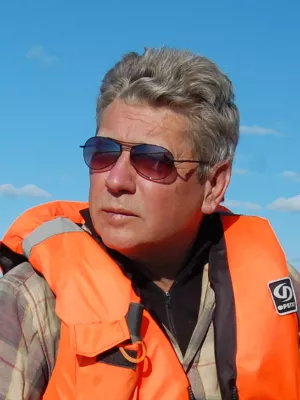
Per Möller
Professor

Late Weichselian to early Holocene sedimentation in a steep fjord/valley setting, Visdalen, Edgeøya, eastern Svalbard: glacial deposits, alluvial/colluvial-fan deltas and spit-platforms
Author
Summary, in English
The Visdalen valley, situated at the northwestern corner of Edgeoya, was investigated with respect to lithostratigraphy and depositional environments of the Quaternary sediments. Eight major lithostratigraphic units are recognised of which seven were deposited during the Late Weichselian to early Holocene glaciation, deglaciation and the subsequent emergence of the area, and one unit deposited prior the last glaciation. Till deposition from a west-Bowing glacier was followed by glaciomarine and later marine deposition of fine-grained sediments. Coarse-grained colluvial and alluvial-fan deltas were deposited along the mountainsides in the Visdalen palaeo-bay, and distal sediment gravity-flow deposits from these deltas were interbedded with the glaciomarine-marine sediments. A spit-platform (riegel) was built up across the Visdalen bay contemporaneously with the alluvial fan-deltas. Its formation was time-transgressive, with its highest part in the south close to the marine limit at 85 m a.s.l. and its lowest part in the north at ca 65 m a.s.l. The sediment source was alluvial and colluvial debris, which was entrained by longshore currents along the more exposed coast south of Visdalen and transported northwards to the final place of deposition. The bulk part of the riegel ridge is composed of progradational successions of steep foresets dipping towards NW, N and NE, and clearly rejects an earlier ice-contact model. Datings suggest that the fan-delta deposition and the riegel formation ended before 9,000 BP. A meltwater-fed lagoon with a highest level at >50 m a.s.l. was formed behind the riegel ridge in which; according to varve counting, glaciolacustrine sedimentation lasted more than 250 years and occurred within the time span 9,000-8,500 BP. Gradual uplift of the area resulted in drainage of the glaciolacustrine lagoon. Beachface processes and fluvial down-cutting took place during the emergence of the area.
Department/s
- Quaternary Sciences
Publishing year
1995
Language
English
Pages
181-203
Publication/Series
Polar Research
Volume
14
Issue
2
Links
Document type
Journal article
Publisher
Wiley-Blackwell
Topic
- Geology
Status
Published
ISBN/ISSN/Other
- ISSN: 0800-0395

